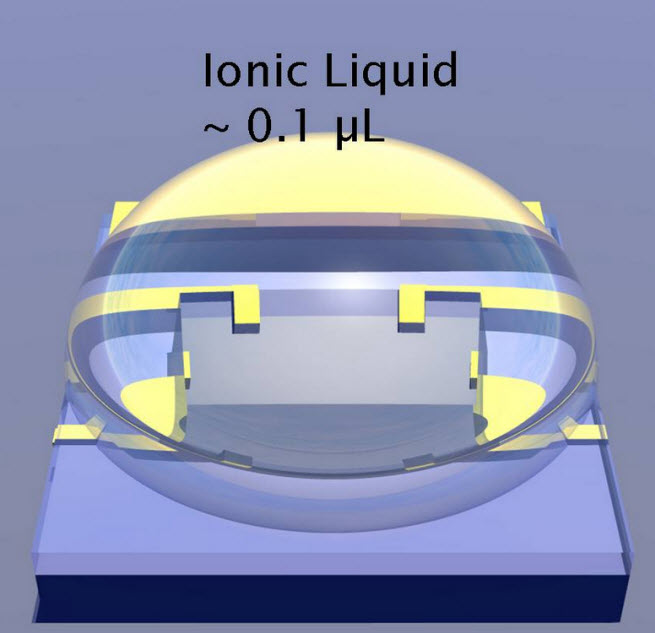For decades, the transistor has been the building block of electronic devices, from computers to smartphones. It has seen little change, but a team of researchers at IBM has given the transistor a major makeover, and it may enable the company to build computers that function more like the way the human brain works.
[aditude-amp id="flyingcarpet" targeting='{"env":"staging","page_type":"article","post_id":703077,"post_type":"story","post_chan":"none","tags":null,"ai":false,"category":"none","all_categories":"business,mobile,","session":"C"}']The new technology is based on materials called “correlated electron oxides,” which can be combined with an ionic liquid, or a mixture where half of the molecules carry a positive charge and half are negative. When you apply a tiny ionic voltage to the liquid, the charged particles move to opposite sides of the surface of the oxide material. The charge leaves the oxide and goes into the liquid, changing its conductive state from an insulator to a metal, or from something that does not conduct electricity to something that does.
AI Weekly
The must-read newsletter for AI and Big Data industry written by Khari Johnson, Kyle Wiggers, and Seth Colaner.
Included with VentureBeat Insider and VentureBeat VIP memberships.
And it maintains its electrical state until another charge is applied. That part of the research is new and is particularly encouraging. IBM believes it can create non-volatile memory, or chips that save data whether electricity is on or off. It can also make logic chips that would use less power than today’s silicon-based semiconductor chips, which are the brains of everything electronic.
Big Blue is disclosing the breakthrough in the journal Science today. Stuart Parkin, an IBM fellow and lead researcher on the project at IBM, said in an interview with VentureBeat that the small team of researchers had been working for a couple of years.
“We are using tiny currents of ions of atoms generated by these electrical signals to change the state of matter of this oxide material,” he said. “It is a means to build low-energy, highly efficient devices by turning on and off their conducting state. We turn this material into a metal and maintain it without any need to supply power.”
That latter part is remarkable, as silicon chips require constant voltages to function.
Chips that use electricity have been evolving for decades, with progress marked by Moore’s Law, named after Intel chairman emeritus Gordon Moore, who predicted in 1965 that the number of components on a chip would double every year or so. That prediction has been very accurate, but experts worry that progress will slow as semiconductor technology runs into fundamental limits. IBM is working on new solutions, including traditional semiconductor chips that process data like the human brain does.
Parkin said that by applying a charged ionic liquid electrolyte to a substance, the team has been able to create a stable insulating and conducting state of an oxide material. This discovery has opened a way for making oxide-based transistors and logic gates.
[aditude-amp id="medium1" targeting='{"env":"staging","page_type":"article","post_id":703077,"post_type":"story","post_chan":"none","tags":null,"ai":false,"category":"none","all_categories":"business,mobile,","session":"C"}']
“This is an alternative to a slowdown in Moore’s Law,” Parkin said. “Our inspiration is the brain and how it operates. It is full of liquids and ionic currents. We could build more brain-like devices.”
The picture at right shows a drawing of a nanofluidic circuit, which operates by passing the green ionic fluid through conduits fabricated on top of the orange planar oxide surface. When a voltage is applied to the liquid (the blue part), the yellow balls from the oxide surface in the liquid are metallized. When no voltage is applied, there is no ionic motion and the oxide surface is an insulator, which does not conduct electrons. Circuits can be dynamically formed on the surface of the oxide.
VentureBeat's mission is to be a digital town square for technical decision-makers to gain knowledge about transformative enterprise technology and transact. Learn More

